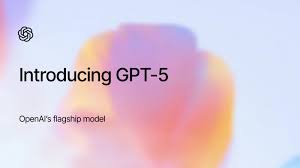Gpt-5 Openai
GPT-5 OpenAI: Everything You Need to Know About the Next Evolution in AI
GPT-5 by OpenAI is the highly anticipated successor to GPT-4, promising to redefine what’s possible in artificial intelligence. With GPT-4 already powering advanced tools like ChatGPT, expectations are sky-high for what GPT-5 will deliver in terms of intelligence, performance, and real-world applications.
In this article, we’ll explore everything you need to know about GPT-5, including its release date predictions, key features, potential use cases, and what makes it a game-changer for businesses, developers, and AI enthusiasts.
What Is GPT-5?
GPT-5 (Generative Pre-trained Transformer 5) is the upcoming large language model (LLM) being developed by OpenAI. It is expected to be a major upgrade over GPT-4, with improvements in reasoning, speed, contextual understanding, and multi-modal capabilities (text, image, audio, and video processing).
GPT-5 will likely be integrated into OpenAI’s ChatGPT, Microsoft Copilot, and other AI-powered platforms.
Expected GPT-5 Features
Although GPT-5 has not yet been formally launched by OpenAI, the following features are anticipated based on industry rumors and trends:
1. Increased Accuracy and Reasoning
It is anticipated that GPT-5 will perform better than GPT-4 in factual consistency, complicated reasoning, and logic-based tasks.
2. Expanded Context Window
GPT-5 may manage even lengthier papers and chats, with a potential context window of more than 1 million tokens.
3. Improved Multi-Modal Assistance
improved text, image, audio, and video comprehension and generation capabilities, establishing it as a genuine multimodal model.
4. Personalization and Memory
GPT-5 may include long-term memory and better user personalization, allowing it to remember preferences and previous interactions.
5. Faster, More Efficient Performance
Optimized training and inference speed could lead to quicker responses and lower computational costs.
GPT-5 Release Date: When Will It Launch?
As of August 2025, OpenAI has not officially confirmed the GPT-5 release date. However, many industry insiders expect GPT-5 to launch between late 2025 and early 2026, possibly in beta stages for developers before a full public rollout.
Use Cases for GPT-5
GPT-5 will likely unlock new opportunities across various industries:
-
Customer Support Automation
Smarter AI agents for handling complex customer queries. -
Content Creation
Human-level blog writing, video scripts, and storytelling. -
Programming Assistance
Advanced coding, help, debugging, and software generation. -
Education
Personalized tutoring and curriculum creation using AI. -
Healthcare
AI-assisted diagnostics and patient communication.
Is GPT-5 Safe?
OpenAI is expected to continue prioritizing AI safety and alignment with GPT-5. This includes:
-
-
Reducing hallucinations (false information).
-
Filtering harmful or biased outputs.
-
Transparency in use and training data.
-
Giving users control over AI behaviors.
-
GPT-5 vs GPT-4: What’s the Difference?
| Feature | GPT-4 | GPT-5 (Expected) |
|---|---|---|
| Release Year | 2023 | 2025 (est.) |
| Context Length | Up to 128K tokens | Possibly 1M+ tokens |
| Modalities Supported | Text, Image | Text, Image, Audio, Video |
| Reasoning Ability | Strong | Significantly Improved |
| Personalization | Limited memory (Plus only) | Persistent memory (wider access) |
| Speed & Efficiency | High | Higher and more optimized |
